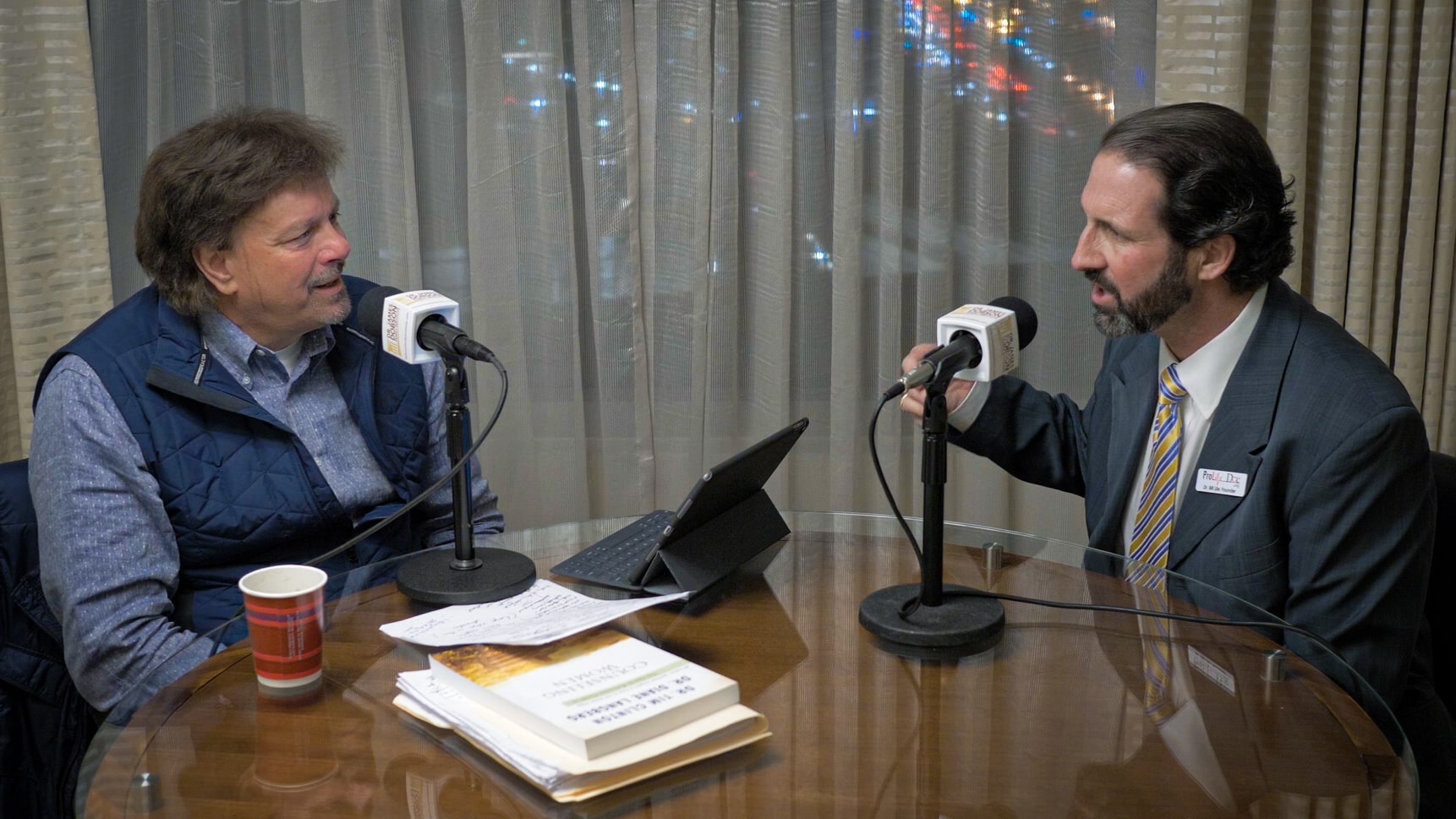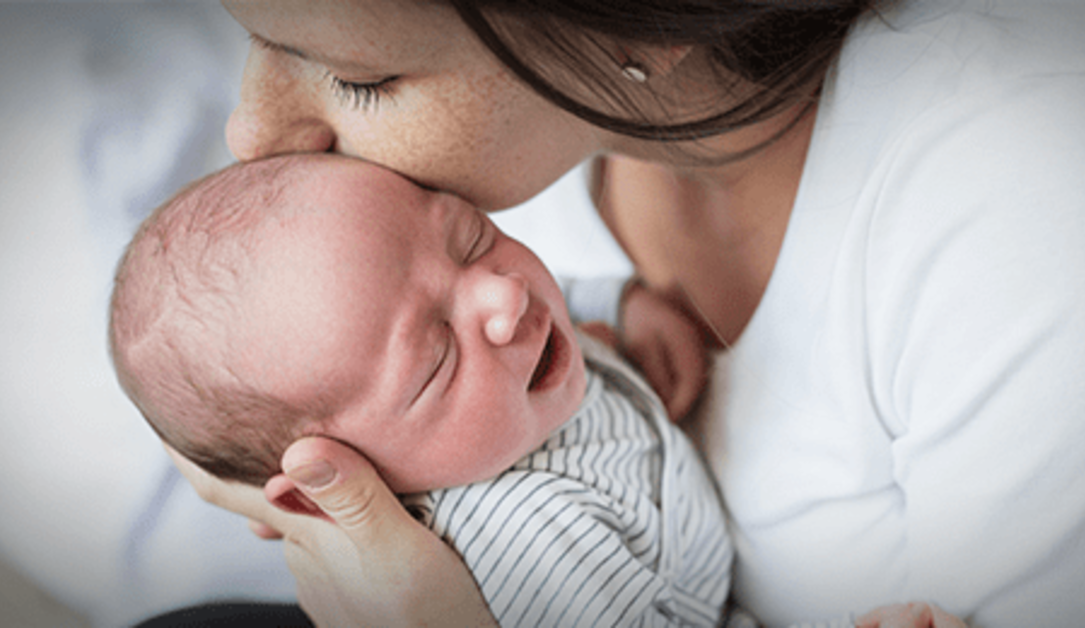More than 500,000 people came together to give a voice to the voiceless at the March for Life in Washington, D.C., in January 2020. Dr. Tim Clinton and the Broadcast team from Family Talk were there to interview participants, including pro-life OB-GYN, Dr. William Lile. The following blog is based on the transcript of their conversation.
Dr. Clinton: Dr. Lile, thank you for joining us at March for Life.
Dr. Lile: We had an amazing time. I mean, we were with 500,000 like-minded individuals, with two goals: to serve our Lord, and defend the preborn. We wanted to make a statement to the nation, and to the world, while we listened to our president delivering the same message.
There were busloads of kids from all over the country, some of whom had traveled all night just to make a stand. They are visual learners, and the more that people see the lives of the preborn in the womb, whether it's ultrasound, MRI, or surgery, they get it. They understand that this is a patient on the inside. And if it's a patient, it's a person, so they're here to defend their peers.
Dr. Clinton: You're an OB-GYN. Tell us about that.
Dr. Lile: Obstetrics is a natural process where you're helping a mom have a happy, healthy, natural pregnancy. There's nothing more exciting than somebody who has a positive pregnancy test, and then can see that life on the ultrasound. You see little fingers, little toes, hear the heart beating, and know this is a gift from God. This is something created in the image of God unlike any other creation. There's nothing more magical.
I've delivered 4,000 babies. Each one is special and amazing. And it's just a gift for me to be able to follow with my patients throughout their pregnancy, helping them deal with the sickness and the illness and the challenges; but then to actually see the baby on the outside, that's what gets me there at two o'clock in the morning.
Dr. Clinton: As we talk about abortion and about taking a pro-life position, it's about making sure we get the narrative right. Because I think people say, "I'm pro-life," but don't know how to articulate it very well.
Dr. Lile: That's our role as physicians who are pro-life to say, "Yes, we respect life, but when did life begin?" We read in Genesis 1:26 that we are created in the image of God. God says, "Let us make man in our image." Well, when? It's not when we're born. It's not when we get our first ultrasound. The only time that medically, genetically, scientifically that makes sense when we are created in the image of God is in that very moment of conception.
That is when the family history and the family tree of our mom and dad is created, even when we're just one cell. The genetics of that one cell is identical to all of the cells in that new life's body. But it is unique from the 7 billion other people on the planet. It's unique from anybody who has ever lived or anybody that will live. That's when you were created in the image of God.
Dr. Clinton: So, when conception happens, then that is a person.
Dr. Lile: Oh, no doubt.
Genetics and genes are the blueprint of who we are. That first cell makes an exact copy. So now, we have one cell, two cells, four, eight, 16, 32, 64 cells... But at one point, a cell will say, "I want to start the entire circulatory system." Another cell says, "You do that. I want to start the entire skeletal system." Another cell says, "I want to start the entire neurologic system." How do they know that?
We used to say that 10% of the DNA was what was needed, and the other 90% was referred to as junk DNA. However, God doesn't make junk. Now, we're learning that the 90% we used to call junk DNA, is very much involved in what's called cell differentiation, where cells will divide and say, "All right, I've got the blueprints. I'm going to follow this path." And within 18 days after conception, we can see the heart beating on the inside.
Dr. Clinton: That's significant when you hear about heartbeat bills.
Dr. Lile: And that is just the visual proof of what has been going on. Nothing genetically has changed. But now, we see and hear the heart beating. That's when we can really recognize and visualize this is a new life on the inside, but it was created in the image of God at that moment of conception.
And now, we're not just looking at images, we actually are treating the preborn as patients. We can actually do surgery on babies on the inside. Mom is an amazing life support system for the baby on the inside, but the baby is not part of her body. And how do we know that scientifically?
There are moms that actually make antibodies which can attack the baby. They will attack the baby as something foreign. It's like when somebody gets a kidney transplant. It doesn't matter if it's from their own sibling. It's still foreign. So, for the rest of the pregnancy, these moms will have to take anti-rejection medications because it's not their body. It might be in their body, but it's not their body.
A baby is the same way, where half the genes came from the mom, half the genes came from the dad, and the mom sees these genes and proteins that came from the dad as being foreign. Mom can actually make antibodies which will cross the placenta, that go to the baby, and will start to attack the baby's blood. It's like, why would a mom attack her own child? It's because there's a different person there on the inside. And then we have to do a blood transfusion on the baby. It's amazing!
If we didn't give the baby blood, it would die. How do you get blood to a baby that's inside the womb? We can't just give it to Mom. We actually can guide a needle with an ultrasound. The needle goes through the skin of the mom and goes through the wall of the uterus, into the fluid around the baby. We guide it very carefully up to the umbilical cord. We can actually put it into the umbilical vein.
Dr. Clinton: That's fascinating.
Dr. Lile: And then, once we place it into the umbilical vein, we can give the baby a blood transfusion. Well, where do you get this special baby blood from? It's not special. If you go down to your Red Cross or OneBlood center and you donate blood, and your blood type happens to be O-negative, it could be your blood that we give to the baby to give a life sustaining and protecting blood transfusion.
But once we give the baby a blood transfusion, are we done? No. Mom's autoimmune system is still attacking the baby because it's a different person on the inside. So maybe three or four weeks later, we have to give the baby another blood transfusion. We might have to do this every three to four weeks until the baby is born. If we didn't treat the baby as a separate person, and as a different patient, the baby would die.
Dr. Clinton: It really brings to life Psalm 139 where it says, "We're fearfully and wonderfully made, that while I was yet in my mother's womb, you knew me. You formed me."
Dr. Lile: The psalmist was looking at that, and he goes, "You know what? I don't really understand this. I know there was a night of romance, and then nine months later, this baby came out." My only explanation in the psalmist's mind was that you knit me in my mother's womb. The psalmist realized this has to be God. This is not just something that happens. If you have a design, you have a designer. If you have a creation, you have a creator. And the psalmist was just trying to express, "I don't understand the science, but I do understand that this is so amazing. It has to be the hand of God."
Dr. Clinton: Dr. Lile, why do you use the term, preborn?
Learn More about Dr. Lile
Dr. William Lile is a board-certified obstetrician and gynecologist, and has a private practice near Pensacola, Florida. He founded ProLifeDoc.org and produced a short pro-life teaching on DVD titled "God's Miracle of Life." Dr. Lile has served as an instructor for the OB/GYN residency programs at the University of Florida and Florida State Medical School. He earned his D.O. from the University of Medicine and Dentistry of New Jersey, and then completed his OB/GYN residency program through the University of Florida College of Medicine. Dr. Lile has been married to his wife, Lesley, for 25 years and together they have 2 children.













